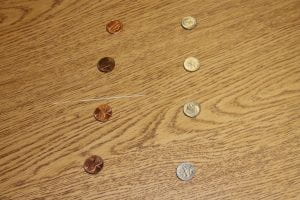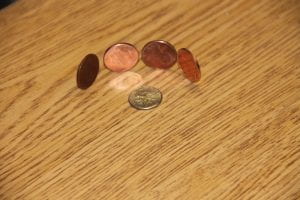Introduction
No Sleep is a game about Insomnia, and the thoughts and feelings that run through your head when you can’t sleep. It is based on my own personal battle with Insomnia, and my own personal feelings. Each level and element in the game is based off of a thought I had while trying to fall asleep.
But before you give the game a try, I want to mention everyone that helped me with this game.
- The music in this game is courtesy of sol.theory.
- The basic art in the game is by a group of artists on OpenGameArt.
- The bell sound effect in the game is from marcelofg55 on OpenGameArt.
- The pictures used throughout the game are from some of my friends on face book. Thanks to Nicole, Ping-Pong, and the Tank.
Now onto the game itself. The game is very simple to play. You use the left and right keys to move around within the game. You can press the space bar to jump, and the up arrow to interact with objects and people.
The goal of the game is to play it.
Documentation
*I would recommend playing first as some of the content is spoiled below*
Since the game is digital, there was no physical photos of the documentation. However, here are some of the notes that I gathered from watching people play.
- In the shifted room (the room where all blocks are displaced from their physical body), player continuously tries to jump on the fake block.
- The player keeps asking me if the shifted room is bugged. All I respond with is no.
- Player tried to jump into pit and started to figure out shifted room.
From these notes I shifted a few of the blocks in the room to make it more likely for the player to accidentally fall onto the safe blocks after missing the real block.
- In the suicide room (the room where you can only progress by falling), players keep trying to find a way out.
- No one ever completed the waiting task and unlocked the achievement for it.
I thought about adding a secret escape from this room, but I felt it would detract from the meaning, so I let players keep killing themselves here. However through my own play testing I found that if you are fast enough you can use the door before you far fall enough down. I didn’t remove this because I felt it still fit with the depression theme (if you can get out before you sink deep into it, you are still safe).
- Players really like the strobe room.
- Every single player on their first try in the room turned the switch on and then off. No one left it on until their second time in the room. Not really sure what this tells me, but I found it interesting.
After gathering this data I tried a version where you couldn’t leave the room unless the strobe was still on. People figured it out pretty quick, but I removed this in the final version.
- Player is having a lot of fun in the straight room (room where the floor disappears behind you). He is trying to get rid of as much floor as possible.
This was a really fun moment to watch as he really was very engaged with it, and seemed to instantly grasp how the room functioned.
Design
Outside of the general documentation from play tests, I figured I would put some of the emotions/feelings that led to elements in the game.
- The suicide room is (obviously) based on depression. The fact that you can wait it out in that room is based on the fact that life gets better (I didn’t want it to be all dark).
- The different jems you unlock by completing different challenges are based on 4 different feelings, each linked to a colour. Green is life (or positivity), black is death (or negativity), blue is calm, and red is chaos. Each jems challenge to unlock it is linked to its colour.
- All of the voice clips in the game are in Japanese, and read off by google translate. They are then distorted and pitch shifted way down. I did this to try and represent the nonsense thoughts and feelings that do have an origin, but you can’t seem to place them. Since I know a little Japanese, I can sometimes make out a bit which helps reinforce it (at least for me).
- The images used in the art gallery are all from my life, and represent passing memories, friends, and feelings throughout my life.
Artist Statement
This game was obviously very inspired by my insomnia, but that was far from the only influence. The largest influence outside of myself was the game LSD: Dream emulator. The game was based on the dreams of the designer and has a similar nonsense/confusing aesthetic to mine. I also was heavily inspired by the art style of the game and used a similar style myself.
Within our class I was most inspired by the Yes Men. They push their views because they believe their is a lack of understanding or complacency in the world. They try to make people understand things, that they would never understand on their own. That is what I tired to do with this game as well. Many people that I have talked to about my insomnia have responded with things like, “Oh yeah I pulled an all nighter, it was kinda cool.” I hate this remark, because people don’t understand how much not sleeping sucks. Especially when it’s all the time, not just a one off all nighter. While I’m not sure how well I portrayed that feeling through the game, it was still an outlet for some of my feelings on the topic, and it made me feel a lot better after making it.
Schrank Chart
I feel like No Sleep falls under the category of Radical Formal, or reflexive. It falls under this category as there are no (intended) underlying political motives. I wanted to play with the form of video games, and the concept of discontinuous mechanics through the lens of insomnia. There is no agenda trying to be pushed, just a love and exploration of the medium. If I was to place it on Schranks chart, I would place it between Rom Check Fail and Cory Arcangel.




